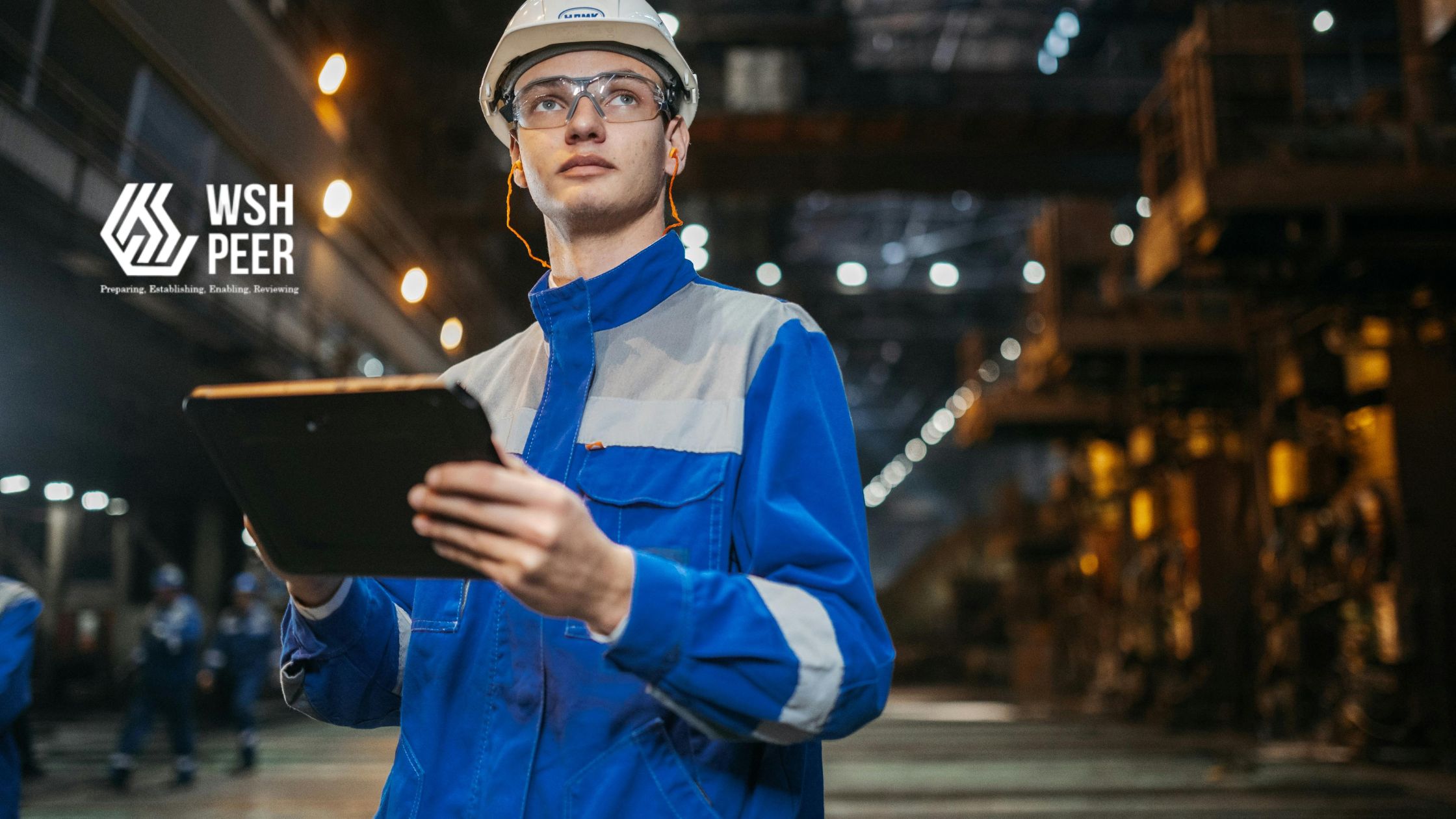Key Highlights
- Electronic Permit to Work (e-PTW) systems make construction site safety better by using digital and automated PTW processes.
- In places like Singapore, e-PTW helps meet workplace safety rules and helps companies follow legal needs.
- E-PTW solutions cut out paperwork, speed up workflows, and improve communication for quick approvals and less downtime.
- Digital systems create clear records, provide real-time data, and allow for electronic approvals. This helps keep things transparent and accountable among stakeholders.
- E-PTW software makes useful data that can be looked at to find safety patterns, possible dangers, and ways to get better.
Introduction
The construction industry is always changing. It looks for new ways to improve safety and efficiency. A solution that is becoming more popular is the electronic Permit to Work (e-PTW) system. This blog will discuss how e-PTW is changing the way construction projects run. It helps reduce risks and makes sure that rules are followed in challenging project settings.

Understanding e-PTW (Electronic Permit to Work) in Construction
Knowing about e-PTW (Electronic Permit to Work) is very important. It helps make the approval process for tasks faster and easier, while making sure safety rules are followed. Electronic PTW systems protect sensitive information through secure websites. Digitizing the workflow makes things more efficient and cuts down on paperwork. E-PTW solutions give a clear scope of work, which helps with job completion and keeps the environmental impact low. Using e-PTW helps promote safe work practices. This reduces the risk of injuries and fatalities on construction sites. These systems are essential for improving site safety and managing projects better.
The essentials of e-PTW Systems
An effective e-PTW system has several important parts that help keep construction projects safe. At its heart, this system offers a digital place for people to create, submit, review, and approve permits to work (PTWs). Doing this online removes the slow and error-prone problems that come with paper-based methods.
The approval process is easier with e-PTW. It allows for multiple levels of approval and sends automatic notifications to the people involved. This way, everyone has real-time visibility into the status of each permit. It helps improve communication and coordination on the construction site.
Also, keeping information safe is very important in an e-PTW system. Sensitive information, approvals, and records are stored securely. Many use cloud solutions that have strong access controls and encryption. This digital method makes audits easier and keeps the data safe throughout the project lifecycle.
Why e-PTW is a game-changer for construction safety
The effect of e-PTW on construction site safety is strong. It helps reduce accidents and builds a better safety culture. By automating risk checks, making sure the right safety measures are followed, and giving clear work guidelines, e-PTW encourages spotting and handling hazards early.
e-PTW systems let people monitor and communicate in real-time. This means they can act fast when conditions change or if there are new dangers. This quick response is key to lowering risks and stopping accidents, keeping workers safer on the construction site.
Also, e-PTW systems make safety audits and inspections easier. With digital records and easy access to documents, safety managers can show they are following rules and finding ways to improve safety practices.
The Legal Framework Surrounding e-PTW in Singapore
Singapore has a strong legal system for workplace safety and health. E-PTW solutions are becoming more important for keeping up with these regulations. A sad event in 2016, where a PTW was faked and resulted in a death, highlighted the need for better safety measures.
The Workplace Safety and Health (WSH) Act is the main rule for safety in Singapore. It highlights the responsibilities of everyone involved in a construction project. E-PTW systems are important to show that they follow the WSH Act. They help reduce the chances of such events happening again.
Overview of the Workplace Safety and Health (WSH) Act
The Workplace Safety and Health (WSH) Act is an important law that helps keep people safe in construction. It requires strict rules to follow for safety, which helps lower deaths and injuries on the job. By creating safe work practices, it improves site safety and lessens risks in the construction industry. This law makes it a must for stakeholders to put worker health first, stressing the importance of occupational safety on construction sites. The WSH Act is vital for building a safe and sustainable culture in the construction sector.
The role of the Ministry of Manpower (MOM) in e-PTW regulation
The Ministry of Manpower (MoM) is very important in managing e-PTW systems in the construction industry. They create rules and check if these rules are followed to keep workers safe and healthy. MoM conducts audits and uses analytics to make sure safe work practices are followed. This helps lower the number of occupational fatalities and injuries. Their work helps construction sites follow strict measures that match occupational safety standards. This creates a workplace culture focused on safety and health.
Implementing e-PTW Solutions: A Step-by-Step Guide
Transitioning from a paper-based PTW system to a digital e-PTW solution needs good planning and careful steps. This change affects many parts of site operations. It is important to have a clear plan to ensure a smooth and successful setup.
Start by closely looking at your construction project’s needs and issues concerning work permits. Think about the size of your operations, the types of risks present, and the current safety culture at your site. This evaluation will help you choose and adjust an e-PTW solution that meets your needs well.
Assessing your construction project’s needs for e-PTW
A thorough assessment is the first important step in starting an e-PTW solution. The project manager and safety teams lead this process. They look at the project’s details and challenges. They also find the risks linked to different jobs. Additionally, they review current PTW processes to find ways to make them better.
The scope of work is key to deciding what the e-PTW system needs. For large projects with many contractors and high-risk tasks, the system needs strong features. These features include multi-level approvals, real-time communication, and detailed reporting. Smaller projects could use a simpler solution. This solution should still offer the main benefits of going digital.
It’s also essential to think about the current safety culture at the site. If workers are used to paper-based systems, training and support will be necessary. This helps make a smooth changeover and gets support from all stakeholders.
Key considerations for selecting an e-PTW system
Choosing the right e-PTW system for your construction project is critical to reaping the full benefits of digitalization. Several key factors should guide your selection process. Start by evaluating the system’s features and capabilities to ensure they align with your specific needs – such as customization options, software security, and training needs.
Ease of use is paramount to encourage widespread adoption. The system should be intuitive for all users, from field workers to project managers, with a user-friendly interface and mobile accessibility. Consider the level of support and training the e-PTW provider offers to ensure a smooth implementation process.
Conclusion
Implementing e-PTW solutions is very important for better safety and following rules in construction. When people know the basics of e-PTW systems and the laws about them, construction projects can boost their safety practices a lot. It’s key to look at project needs, choose the right e-PTW system like PEER, and make sure it fits well with the current safety systems. Using e-PTW solutions can help make permit processes easier, improve communication, and create a safer work site for all workers involved. Always focus on safety measures to help improve efficiency and lower risks effectively.
Frequently Asked Questions
Resistance to change can be a tough challenge. This is especially true when moving from well-known manual processes and paperwork to digital workflows. To help people adjust, it's important to provide enough training, address any worries, and show the benefits of e-PTW. One key benefit is reduced downtime.
E-PTW solutions can work with different safety systems that site managers use. For example, e-PTW can connect with access control systems, tools for checking the assets, and worker management. This helps make sure that workers are qualified and safe while they work.
Yes, customization is a big advantage of e-PTW. Top providers like PEER give flexible platforms. A project manager can change these platforms to fit specific workflows, hazard assessments, and approval processes needed for different construction projects and general contractors. This helps improve site safety and compliance.







